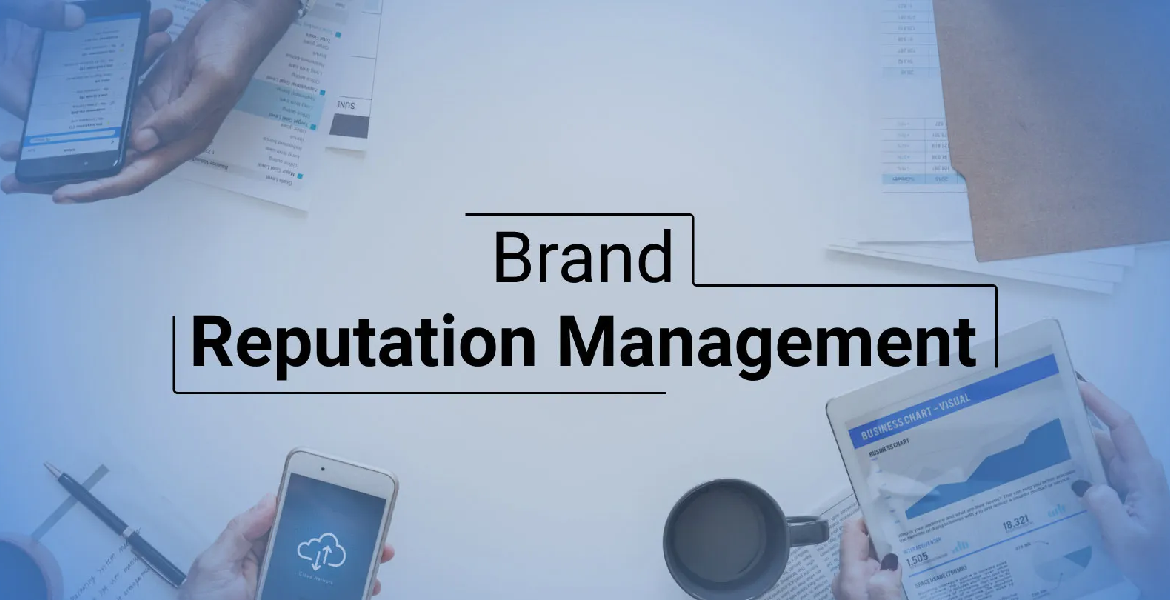Brand and Reputation Management: What Every Business Should Follow
If you run a business in 2025, you’re being evaluated constantly. Along with the product and price, people are also searching your brand name, checking reviews, scanning social comments, and forming opinions often before you ever hear from them.
Brand and reputation management is often thought of as reacting when things go wrong. However, it's about actively shaping your perception and building trust before a crisis hits.

What is Brand and Reputation Management?
It is the ongoing process of monitoring, influencing, and improving how your business is seen by the public. This includes everything from your logo and messaging to customer reviews, news coverage, and your team's online interactions.
Good management is proactive, not just reactive. It’s about making the right impression every day, so if something negative does come up, you already have goodwill in the bank.
Why Brand and Reputation Management Matter More Than Ever
Today’s buyers trust what others say more than what brands claim about themselves. According to research, over90% of consumers state that online reviewsaffect their purchase decision. Negative reviews or news can spread instantly, causing damage that takes months or even years to repair.
Reputation management is about building a system so your brand is respected, trusted, and defended even when you’re not in the room.
Core Principles Every Business Should Follow
-
Own Your Narrative
-
Monitor What’s Being Said
- Google search results for your name
- Social media mentions and hashtags
- Review platforms (Google, Trustpilot)
- News and blogs in your industry
-
Respond Quickly and Transparently
Encourage and Showcase Positive Reviews
Train Your Team on Brand Values
Your story will be told with or without you. Make sure you set the tone. Start with a clear brand promise, consistent messaging, and visual identity. Ensure every touchpoint, like your website, social profiles, and customer service, reflects what you want people to remember.
Mistakes happen. When they do, brands that respond quickly, honestly, and with real solutions usually come out stronger. Don’t delete negative comments or hide from criticism. Address concerns directly, take responsibility if needed, and show your commitment to fixing the issue.
Make it easy for happy customers to share their feedback. Ask for reviews after a successful interaction. Share positive testimonials on your website and social channels. The more recent, high-quality reviews you have, the better your defence against the occasional negative one.
Your employees are an extension of your brand. Make sure they know how to talk about the business and handle customer issues. Training should cover your brand values, tone of voice, and crisis protocols so there’s consistency in every interaction.
Building a Strong Reputation in a Digital World
-
Optimise Your Digital Presence
-
Be Active Where Your Audience Is
Your website, Google Business Profile, and social channels need to be updated, accurate, and professional. Inconsistent information can confuse potential customers and harm trust. Make sure your branding is uniform everywhere.
Don’t try to be everywhere. Focus on platforms where your target audience spends time. Respond to comments, join relevant conversations, and share updates that add value, not just promotion.
Content as a Reputation Tool
Thought leadership articles, case studies, customer stories, and FAQs are more than just content; they build authority and trust. Well-written, useful content helps control your narrative, answers customer questions, and positions you as a reliable resource.
How to Handle Negative Publicity or Reviews
Negative publicity and criticism are part of running any business, but how you handle them makes all the difference. When you receive a negative review or comment, avoid arguing in public spaces.
Thank the customer for their feedback and, where possible, move the discussion to a private channel to resolve the issue. Treat negative feedback as valuable insight if you notice recurring concerns; take action to address the root cause rather than just the symptom.
When mistakes happen, acknowledge them honestly and communicate your steps to make things right. This level of transparency and accountability goes a long way in building trust. Over time, consistently responding with respect and responsibility will strengthen your reputation, even in challenging situations.
Measuring Success in Brand and Reputation Management
You can’t improve what you don’t track. Regularly audit your online reputation by checking:
- Star ratings and review trends
- Brand mentions on social and in the news
- Website traffic and branded search volume
- Sentiment analysis from listening tools
Look for improvements in sentiment, an increase in positive mentions, and a reduction in the number and severity of negative incidents.
Common Mistakes to Avoid
- Ignoring reviews or deleting negative comments
- Inconsistent branding across channels
- Over-promising and under-delivering
- Not updating digital assets or business information
- Failing to respond to crises or criticism
- A strong reputation is built on reliability, not perfection.
Basic Action Steps for Brand and Reputation Management
Effective brand and reputation management starts with clarity on what your brand stands for. Make sure your brand is something that comes through everywhere people encounter your business, on your website, social media, and even in customer conversations.
Keep a close watch on how people talk about your brand by using automated tools to monitor mentions and reviews. This helps you spot feedback quickly and respond in a way that’s open and genuine. When customers have a positive experience, ask them to share their reviews and make these endorsements visible in your channels.
At the same time, invest in training your team so they know how to handle both everyday questions and challenging situations. Your digital presence should never feel out of date; keep your profiles and content fresh and consistent.
Protect your brand’s credibility in search results by using smart SEO tactics that highlight your strengths and push the best stories to the top. Above all, approach every interaction as a chance to build trust and show your commitment. These daily actions add up and shape how your brand is seen.
Final Thought
Every business has a reputation. The question is whether you’re managing it or letting it manage you. Brand and reputation management is about avoiding disaster as well as building a base of trust and loyalty that protects you in both good times and bad. The brands that thrive are those that invest in the basics, respond with honesty, and put their audience first every single day. If you’re ready to make your reputation a strategic asset, the time to start is now.

